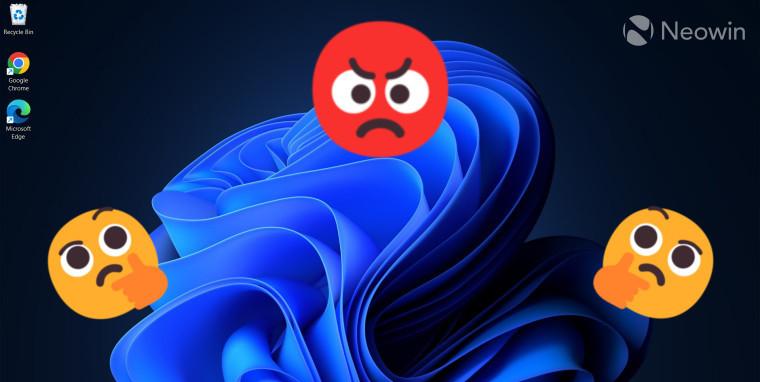IT House reported on April 18 that when it reviewed Windows 11 in 2021, the site gave it a 6.5/10 score, while saying that "simplifying the UI is not a bad idea, but the half-baked way does not bring a real user experience." Sadly, it still hasn't changed after six months.

As we saw in the recent Insider release, Microsoft seems to be intentionally adding new features, but at the same time ignoring UI inconsistencies and lack of basic functionality in existing versions.
All the apps shown in the screenshot are built-in apps developed by Microsoft, but we see that the UI and UX are consistently inconsistent, as if there is no senior leader to oversee the design of the operating system. Even the styles of the icons are different, with some with thicker borders and some more minimalist. It's as if every development team is working in their own silos, focusing only on what they think looks beautiful, without thinking about the overall beauty of Windows 11.
In fact, the problem is not limited to icons. We found that windows 10's old menus were spread across the entire Windows 11 operating system, and the menu options had basically been promoted and shifted from previous versions of Windows, but the overall UX was not considered at all.
All of this suggests that Windows 11 clearly lacks design standardization, which is not a good sensory experience for an operating system used by millions of people.
Windows 11 also has an issue with lack of basic functionality. Microsoft still refuses to let people move the Windows 11 taskbar for ridiculous reasons, but has developed a notepad-turnable settings button gear.
The Windows 11 development team is huge, consisting of multiple sub-teams, with different people doing different jobs. But this type of prioritization results in uneven quality.
So what are the priority underlying features? There are a large number of projects out there with thousands of votes in favor, and ideally, Microsoft should track these projects with higher priorities in terms of development. However, many of these requests have been on hold for months without updates from Microsoft, suggesting that Microsoft deliberately ignored the feedback.
Windows 11 clearly lacks centralized oversight and should be responsible for managing priorities, guiding the development of missing features, and standardizing UI design.
The problem with the existing approach is that each team will continue to develop in its own focus areas in isolation, and while this may lead to the addition of a lot of functionality, it may not be something that people actually need. Because of the inconsistencies in UX, the collection of different components of Windows 11 can make it difficult for the operating system to be cohesive.
It's time for Microsoft to consider making a change.